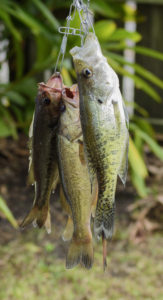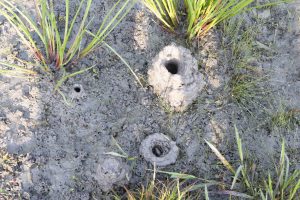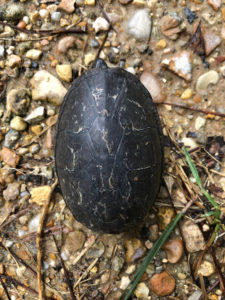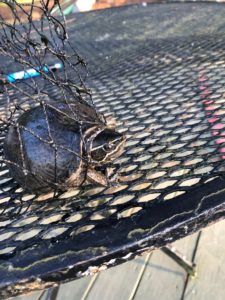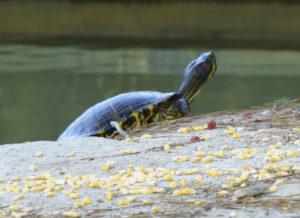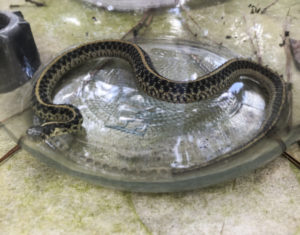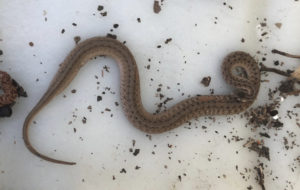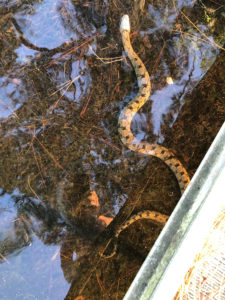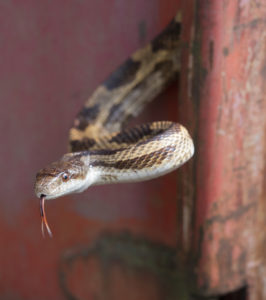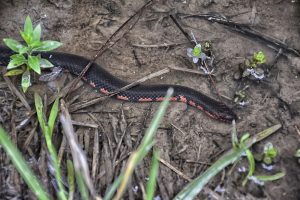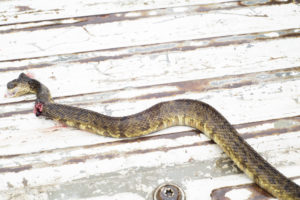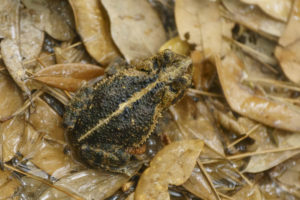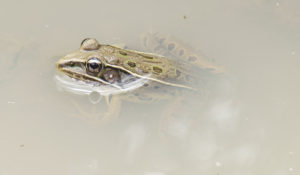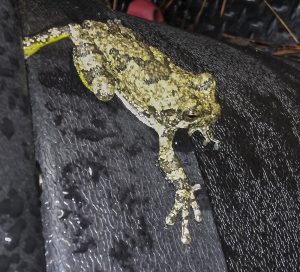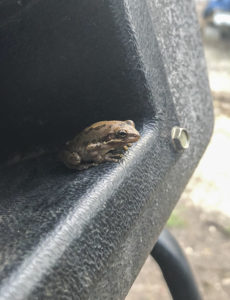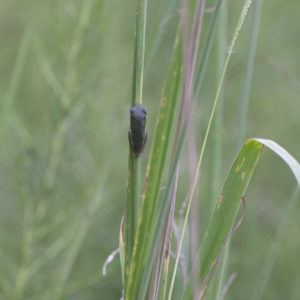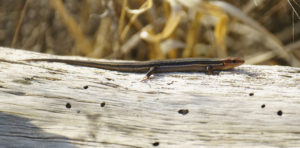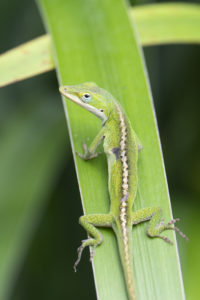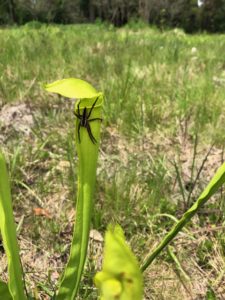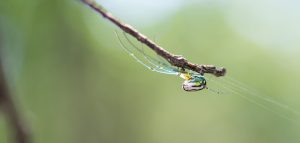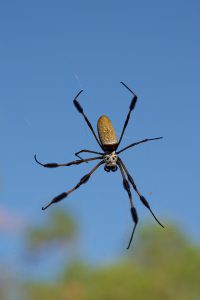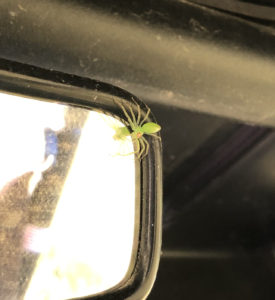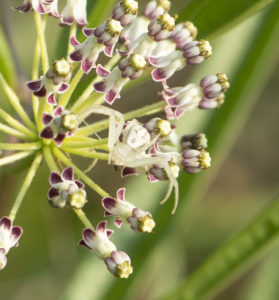Fish and Crustaceans
Fish and Crustaceans are both acquatic animals. Fish are long and thin, boney, and have vertebrae. Crustaceans like crayfish, shrimp and lobster have an exoskeleton. Crayfish, like crab, lobster, prawns and shrimp have jointed legs, a hard shell and no backbone.
Brown Bullhead, Ameiurus nebulosus, a catfish, thrives in a variety of habitats, including lakes, ponds, and slow-moving streams with low oxygen or muddy conditions. They are omnivorous bottom feeders with a diet that consists of algae, leeches, worms, mollusks, crustaceans, insects, crayfish, other smaller fish species and fish eggs.
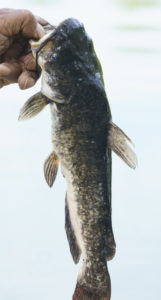
Largemouth Bass, Micropterus salmoides, caught on a red plastic worm in the pond at Vista Farm.
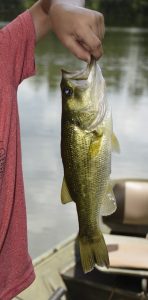
Sac-a-lait, White Crappie, Pomoxis annularis, caught in the pond. White crappies are native to the Great Lakes, Hudson Bay, and the Mississippi River basins expanding from New York and southern Ontario westward to South Dakota and southward to Texas. The species has a large geographic range in the United States and a stable population. White crappies can be found in large rivers, reservoirs and lakes and are most abundant in lakes and reservoirs larger than five acres. White crappies spawn in May and June when the water temperature reaches 56 °F. Males construct nests by creating small, bowl-shaped depressions on the bottom around brush, rocks, and logs in the shallow water. During the spawning season, males develop dark coloration on their throats. Females lay 5,000 to 30,000 eggs. The males guard these nests until the fry swim away. Source: Wikipedia
Paper Pondshell mussel, Utterbackia imbecillis, is a species of freshwater mussel, in the family Unionidae, the river mussels. It is characterized by an unusually thin shell. Paper Pondshells are widely distributed. They are filter feeders that remove particles from the water, primarily algae. In turn they are food for wildlife such as muskrats, beavers, racoons, otters and shore birds such as egrets and herons. Molluscs have a hinged two-part shell and include clams, mussels, oysters and scallops.
Apple Snail eggs
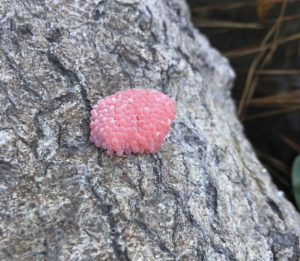
Reptiles and Amphibians
Reptiles, like turtles, snakes, lizards, alligators, and crocodiles are born with lungs, lay their eggs on dry land, and have scaly skin. Amphibians, like frogs and toads have complex life cycles with time on land and in the water. They are born with gills but later develop lungs, lay their eggs in water, and have thin, moist skin without scales.
Turtles, tortoises and terrapins are related. The difference between tortoises and turtles is that tortoises are herbivores that live on land, while turtles are omnivores that live in water. Terrapins are a type of small turtle that live in brackish water.
Eastern Musk Turtle, Sternotherus odoratus, is also called a “stinkpot” due to its ability to release a foul, musky odor from scent glands on the edge of its shell, possibly to deter predation. They are common from Maine to Texas and prefer shallow, heavily vegetated calm waters of a pond. They feed on just about anything they can get a grip on in the water.
A Red-ear Slider, Trachemys scripta elegans, crawling out of the pond to eat the corn the ducks left behind. Red-eared sliders are native to the Southern United States and northern Mexico. They are the world’s most commonly traded reptile, due to their relatively low price, and usually low food price, small size, and easy maintenance. Having become established in other places due to pet releases, red-eared sliders are now included in the list of the world’s 100 most invasive species. As with other turtles, tortoises, and box turtles, individuals that survive their first year or two can be expected to live around 30 years. A 1975 U.S. Food and Drug Administration (FDA) regulation bans the sale of both turtle eggs and turtles with a shell length less than 4 in. The ban was enacted because of the public-health impact of turtle-associated salmonellosis, a dangerous bacteria. Red-eared sliders are almost entirely aquatic and cold-blooded, so they leave the water to sunbathe to regulate their temperature. Source: Wikipedia
A Common Snapping Turtle, Chelydra serpentina, with a shiny shell found beside the pond at Vista Farm. The common snapping turtle is noted for its combative disposition when out of the water with its powerful beak-like jaws, and highly mobile head and neck, hence its name “serpentina”, meaning “snake-like”. In water, they are likely to flee and hide themselves in sediment. Snapping turtles have a life-history characterized by a high and variable mortality rate of embryos and hatchlings, delayed sexual maturity, extended adult longevity, and repeated mating events with low success per event. Females, and presumably also males, in more northern populations mature at 15–20 years and at a larger size than in more southern populations (about 12 years). Lifespan in the wild is poorly known, but long-term recapture data suggest a maximum age over 100 years. Common snapping turtles have few predators when older, but eggs are subject to predation by crows, mink, skunks, foxes, and raccoons, as well as herons (mostly great blue herons), bitterns, hawks, owls, fishers, bullfrogs, large fish, and snakes. Other natural predators which have reportedly preyed on adults include coyotes, black bears, alligators and their larger cousins, alligator snapping turtles. Source: Wikipedia
Speckled Kingsnake, Lampropeltis holbrooki, grows up to 48 inches in total length (including tail). It is black with small yellow-white specks, one speck in the center of almost every dorsal scale and mostly yellow-white underneath. This kingsnake is found from southern Iowa to the Gulf of Mexico. It prefers wet habitats such as swamps and rivers, but it does commonly venture to dry areas such as woodlands and grassy fields. Its diet consists of birds, rodents and other mammals, frogs, lizards, and other snakes. It kills by constriction. When threatened, the speckled kingsnake shakes its tail like a rattlesnake to deter predators.
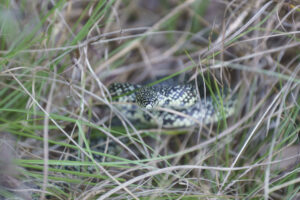
Garter Snake, Thamnophis sertalis, is common from subarctic Canada to Costa Rica. Garter snakes live in a variety of habitats, including forests, woodlands, fields, grasslands and lawns, but never far from water, often adjacent to a wetland, stream or pond. Amphibians are a large part of their diet that includes earthworms, slugs, small rodents, etc.
Plain-bellied Watersnake, Nerodia erythrogaster, is a medium-sized, dark-colored, semi-aquatic snake with a plain yellow belly. It is mainly gray, greenish gray, or brownish black, with little or no pattern on its back. Foods include fish, toads, frogs, tadpoles, salamanders, and crayfish.
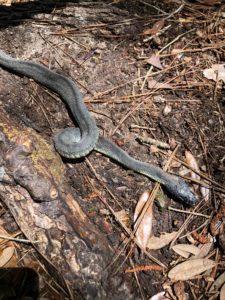
Squirrel Tree Frog, Hyla squirella, is a common tree frog who can change his appearance from green to brown much like an anole. They prefer areas with moisture like marshes, swamps and the edges of lakes and streams. They can also be found in gardens, trees, vines, bushes, shrubs, vines, woods, in and around rotten wood and under logs.
Arachnids
Arachnids are animals in that they reproduce sexually, breathe oxygen, consume food and move. Arachnids are not insects because they have eight legs instead of six, and don’t have antennae or wings.
Mammals and Marsupials
Mammals and marsupials both give live birth. Marsupials have a pouch where the babies develop.
White Tail Deer grazing at the pond at night.

Opossum, Didelphis virginiana, is the only marsupial north of Mexico. It will play dead when attacked outright, but is vicious defending itself before an attack. Nocturnal forager.
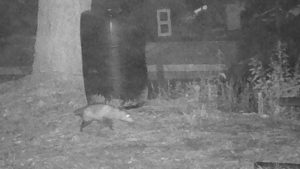
Raccoon, Procyon lotor, is a little bandit that raids the duck nests at night. Babies are cute but the adults are vicious.
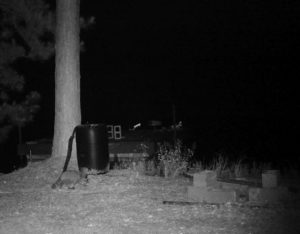
A coyote caught on the game camera at the pond.

Cottontail Rabbit having its dinner in the grassy trail where he can see what’s coming and run into the briar patch.
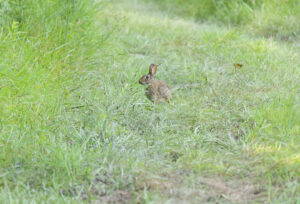
Giant Earthworms
Family Megascolecidae, is a family of earthworms native to Madagascar, Australia, New Zealand, Asia, and North America. At up to 2 meters in length, their large size distinguishes the Megascolecidae from other earthworm families. They are an essential part of maintaining soil structure, minor carbon sequestration, and maintaining terrestrial ecosystems. (Wikipedia)


